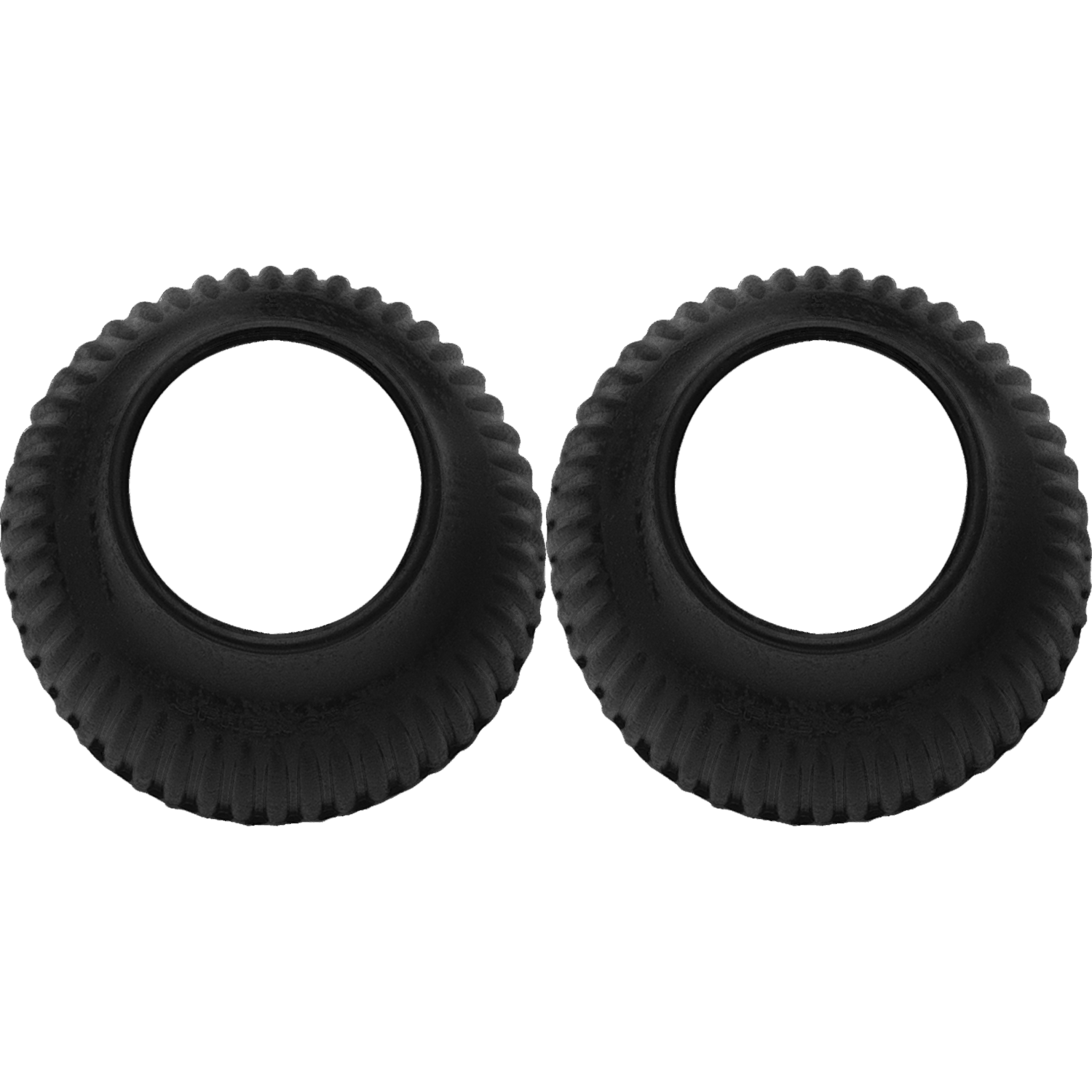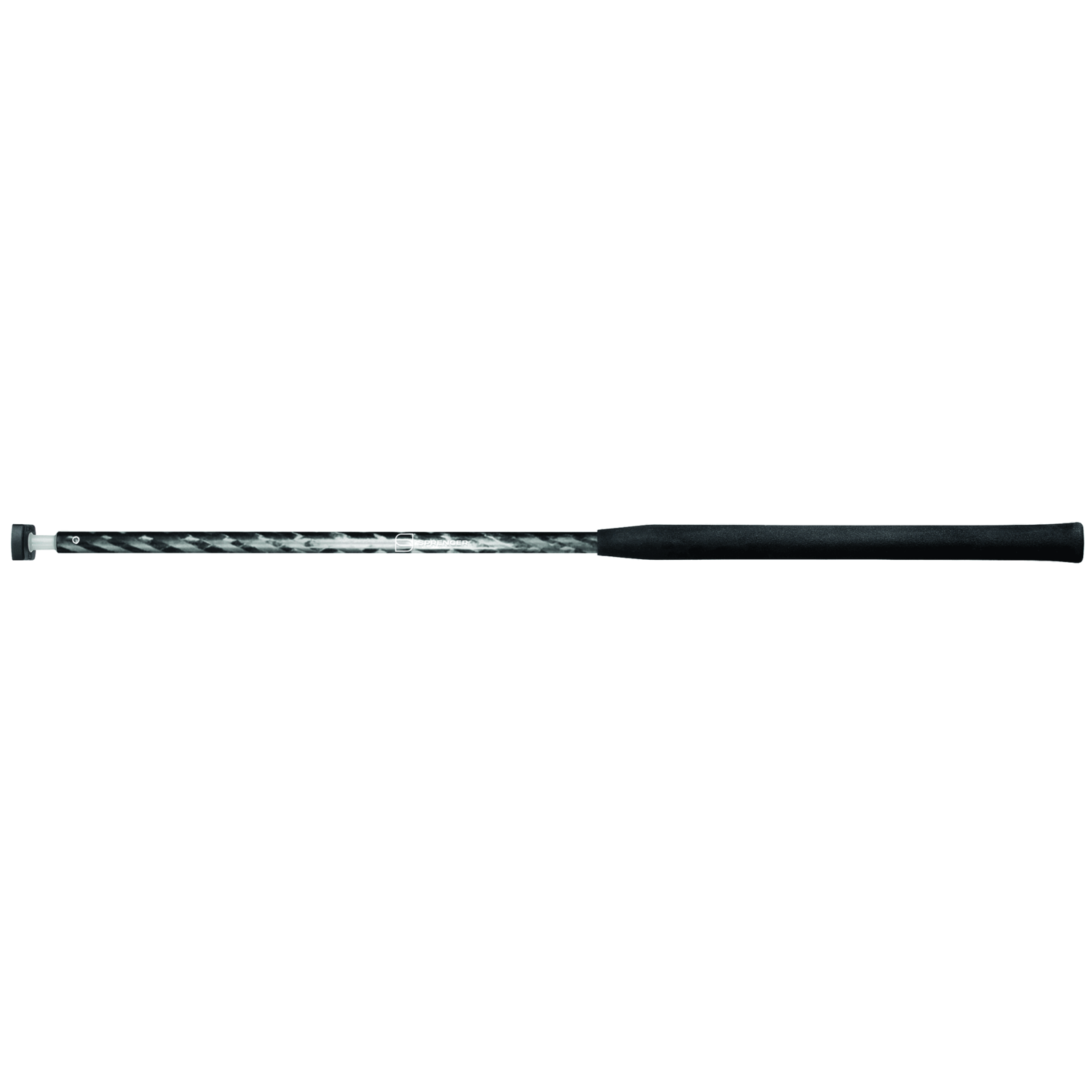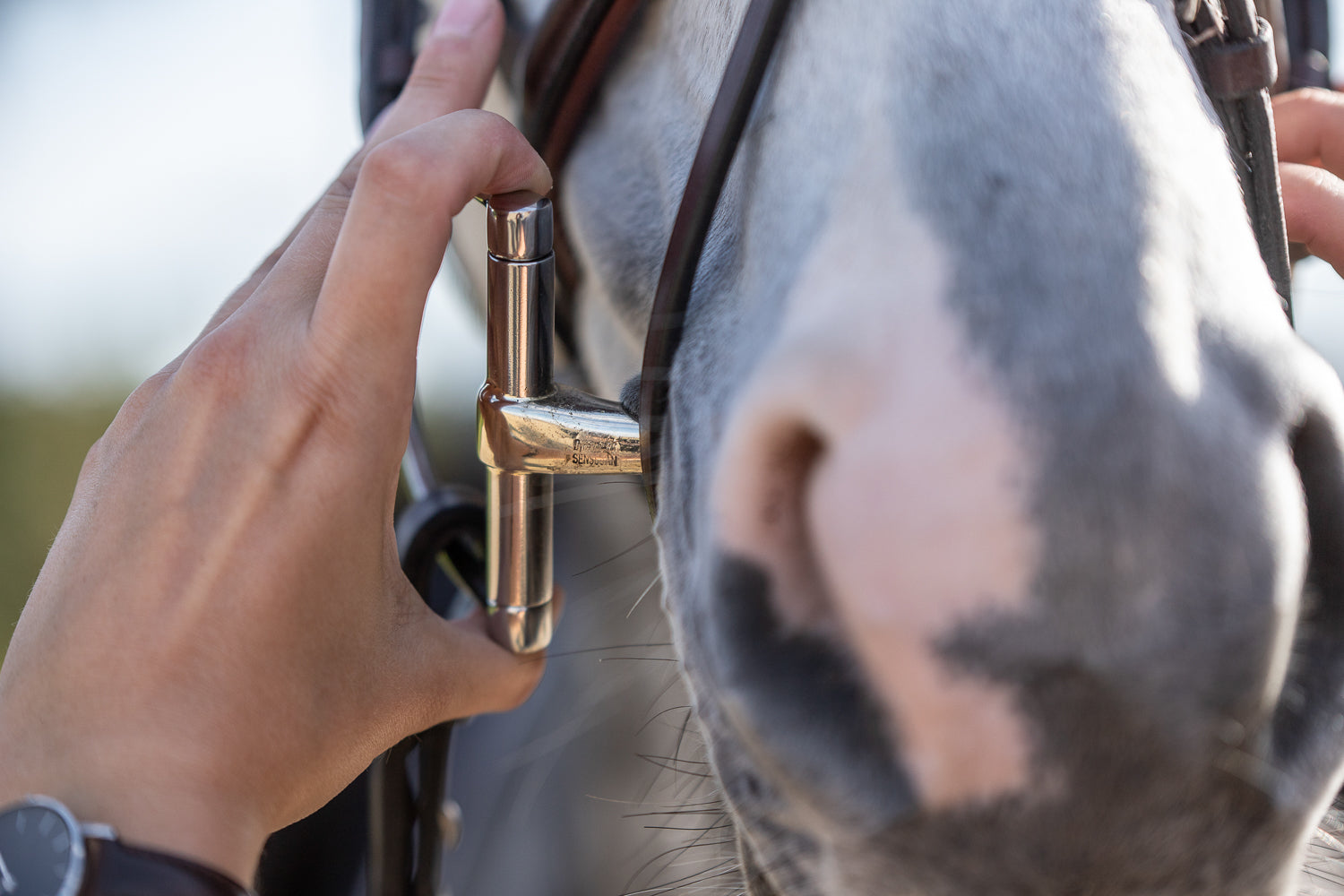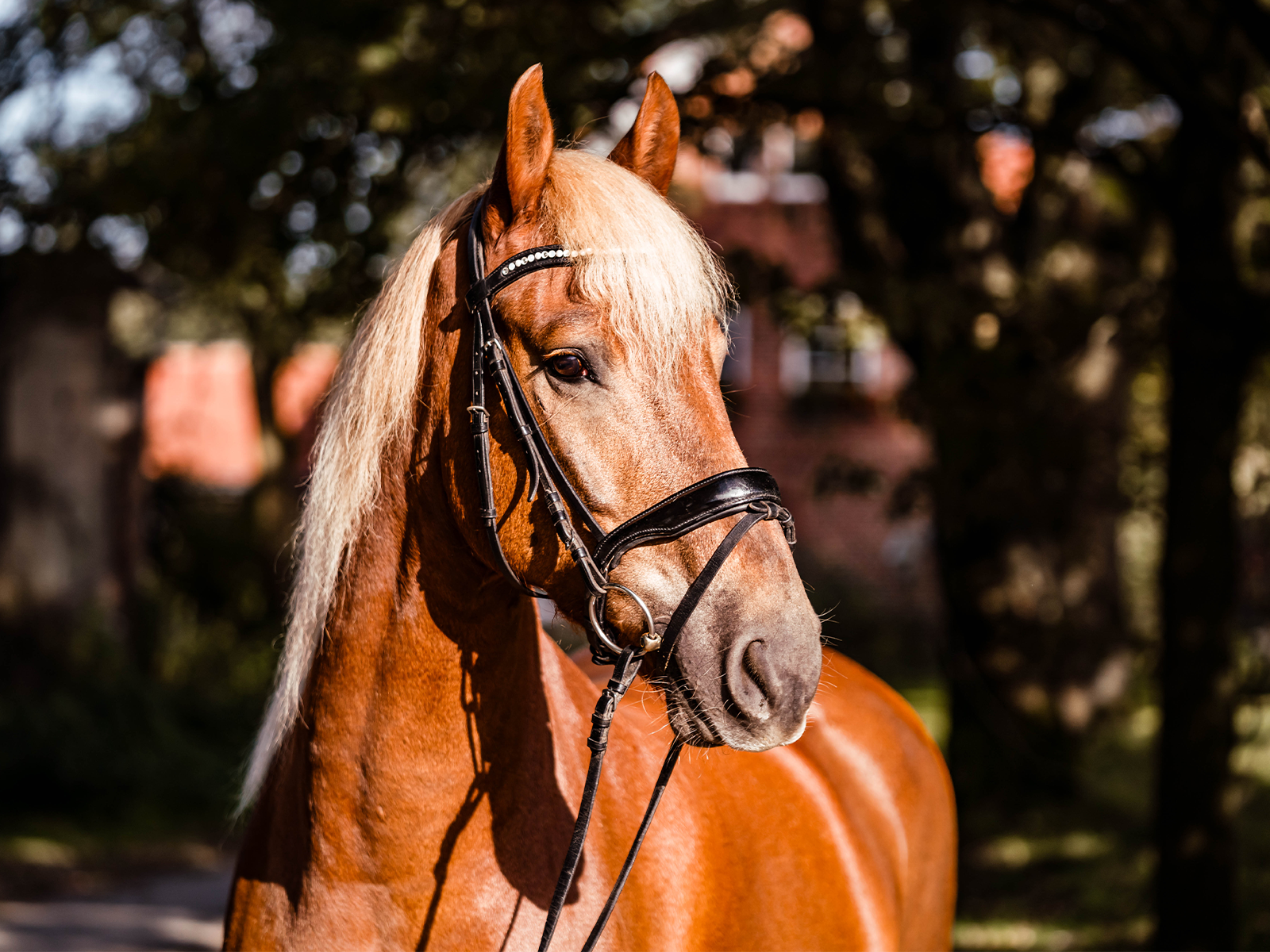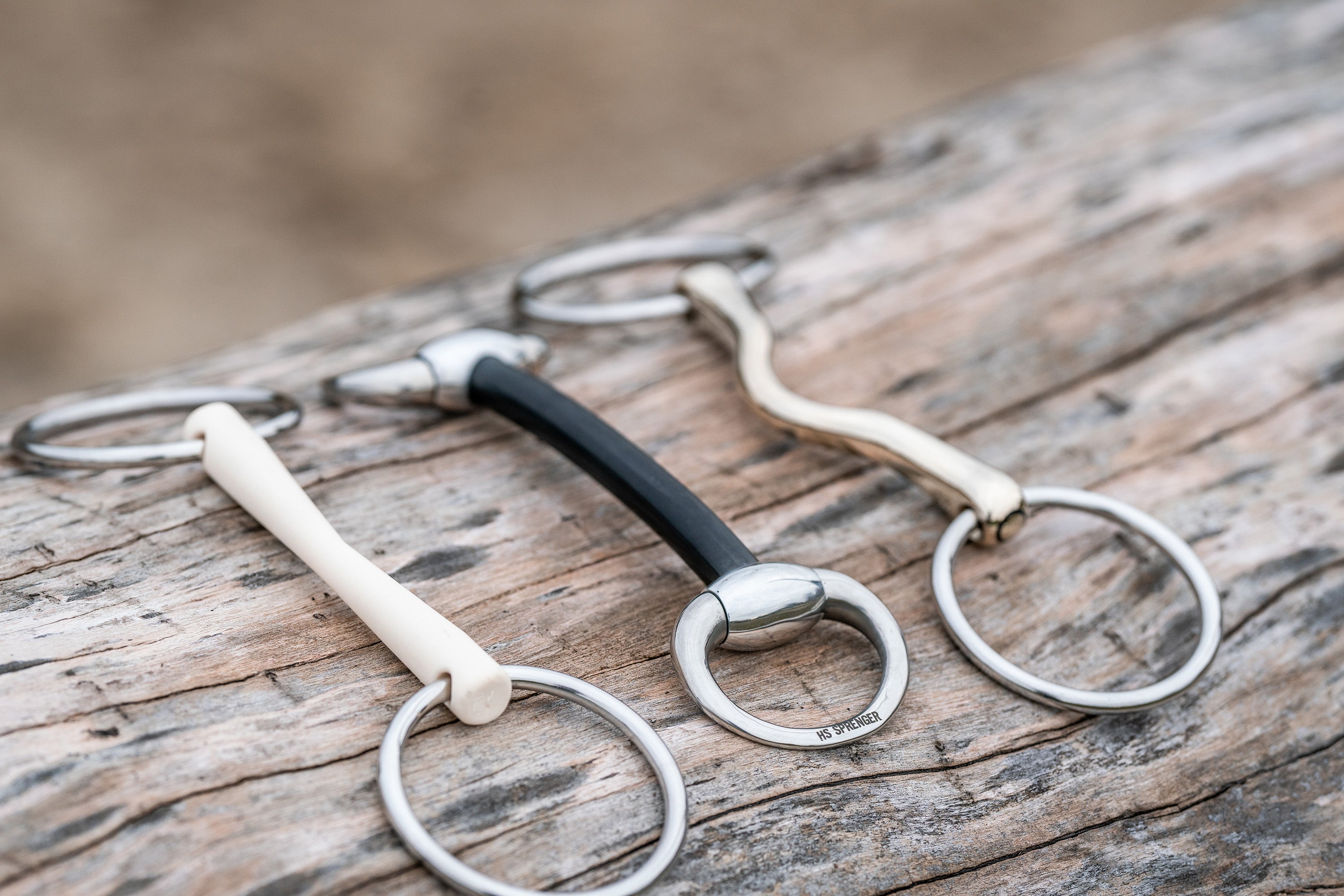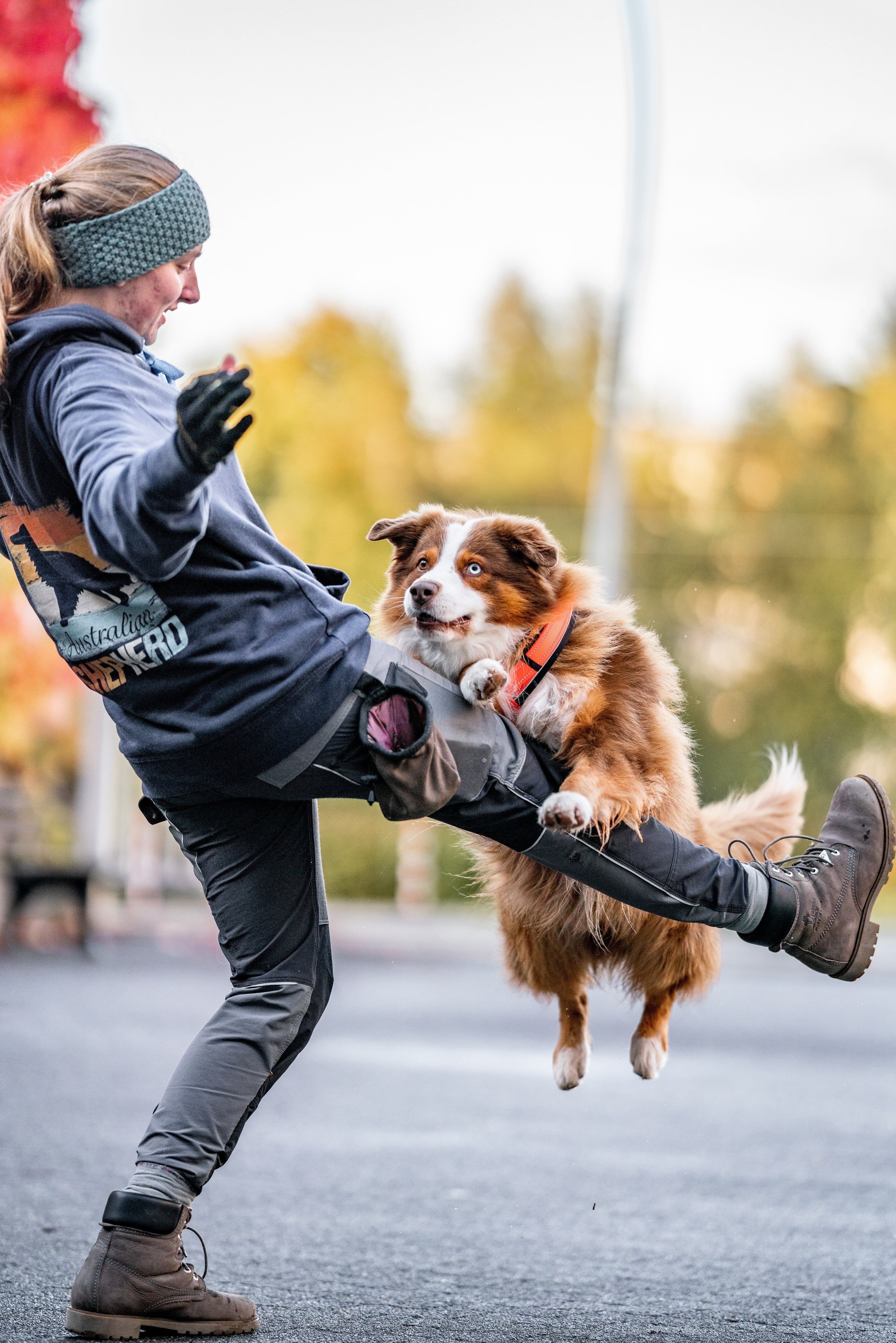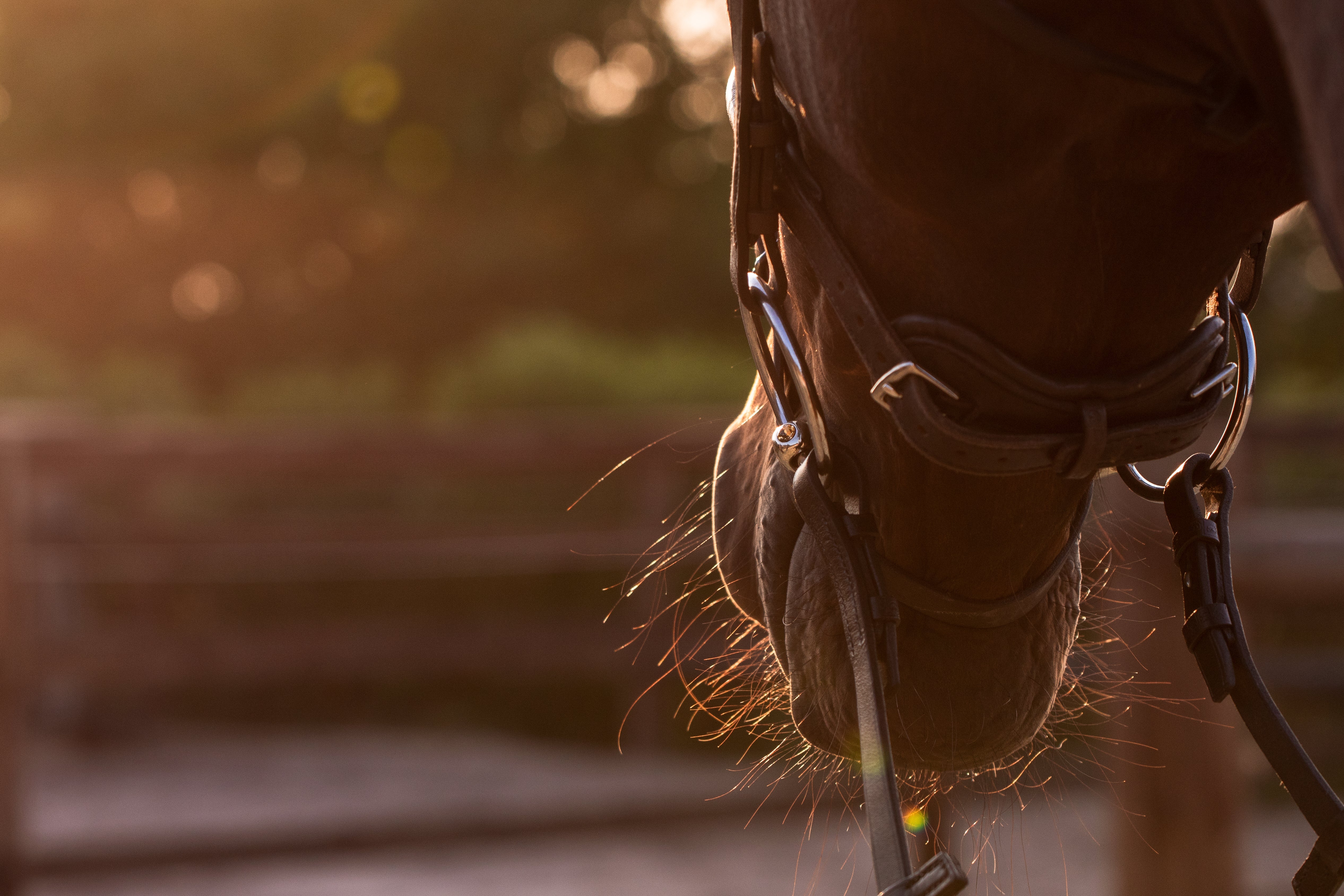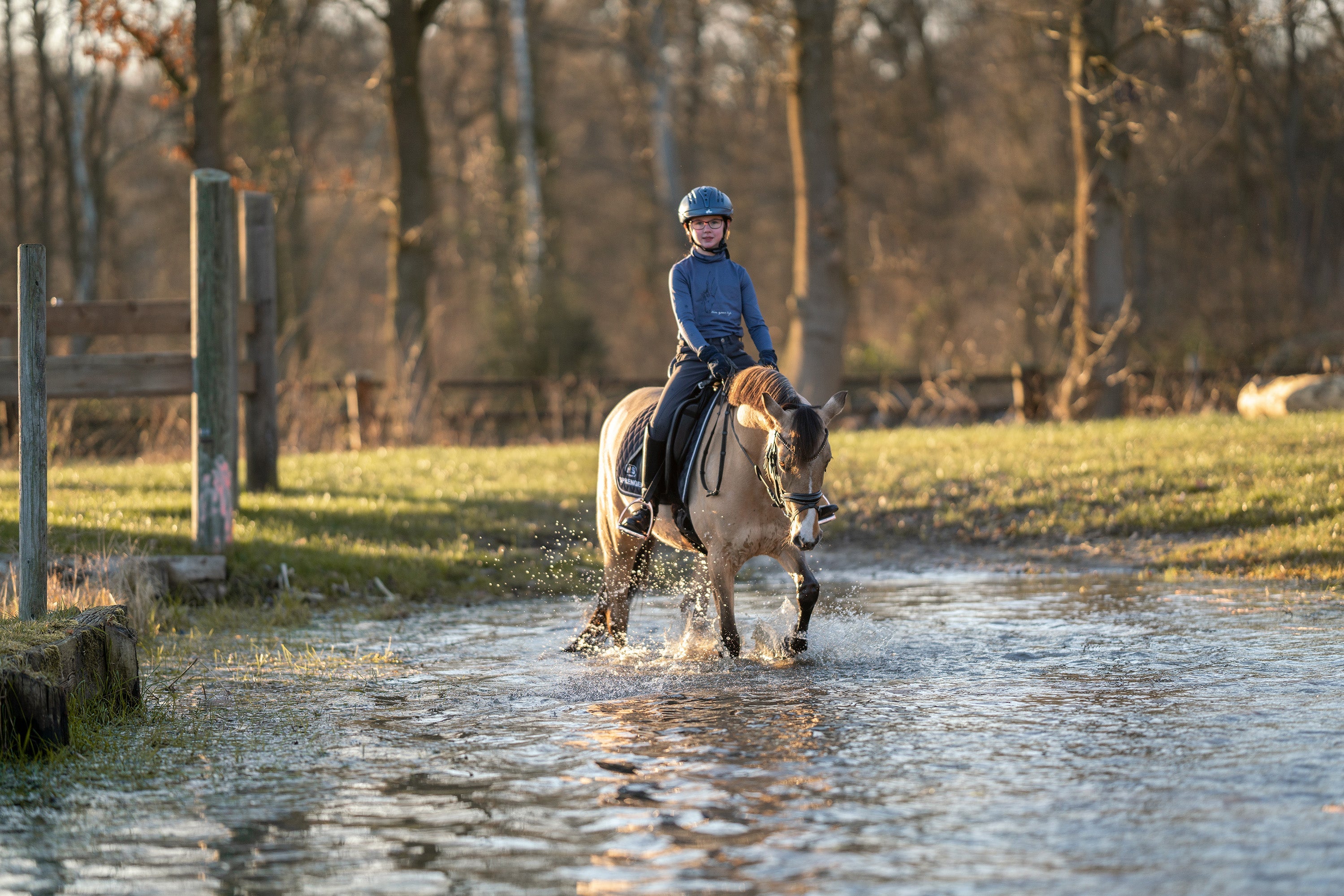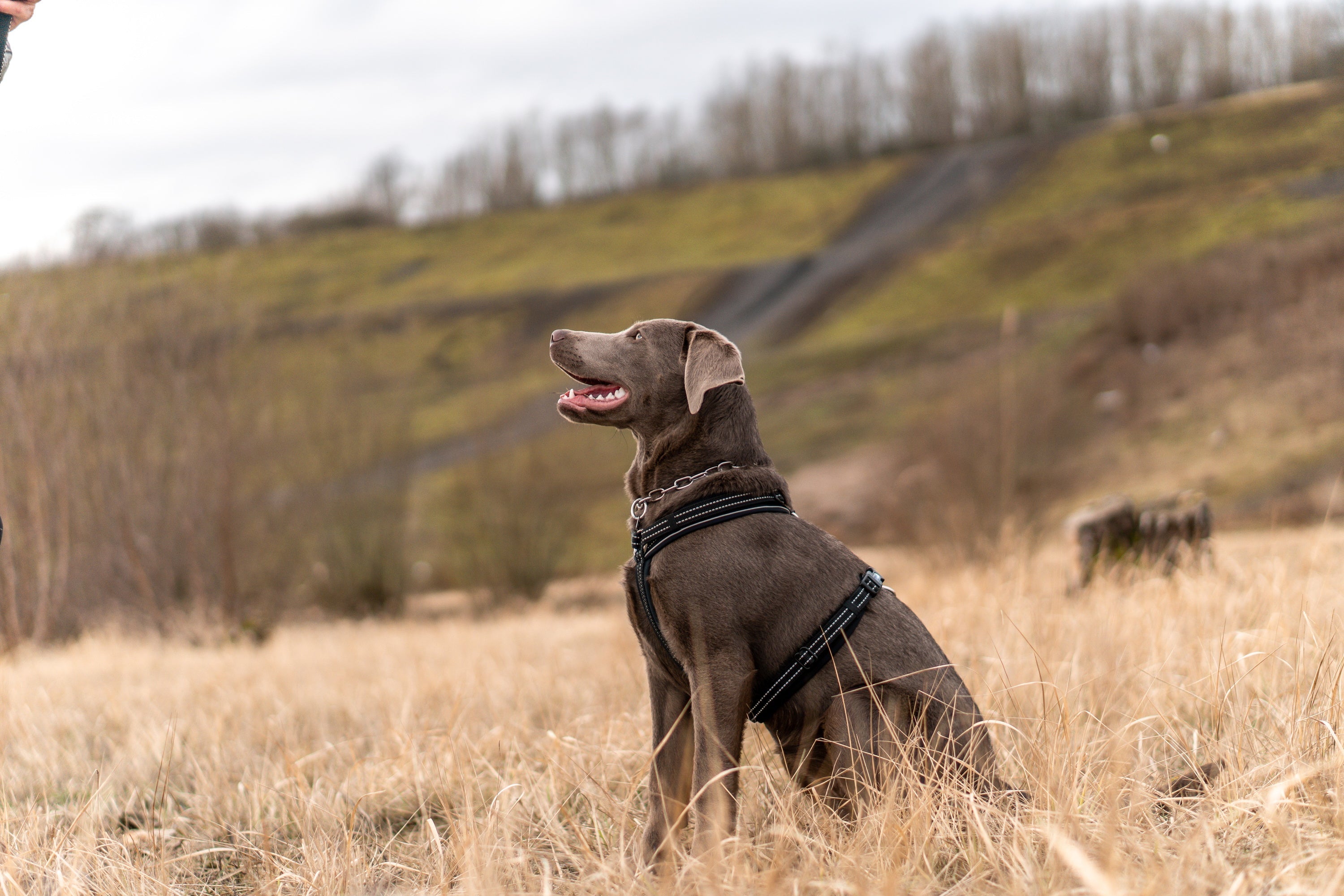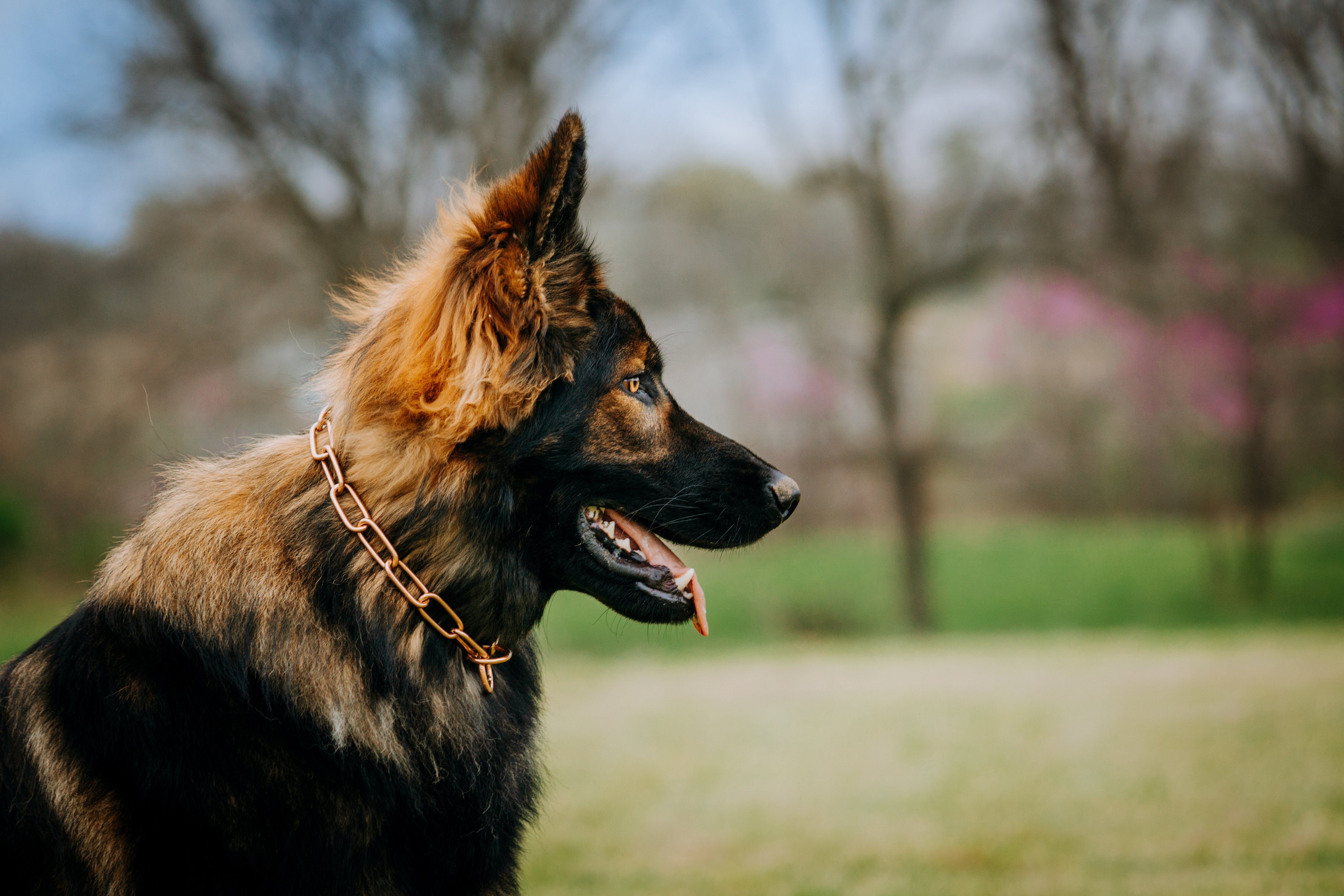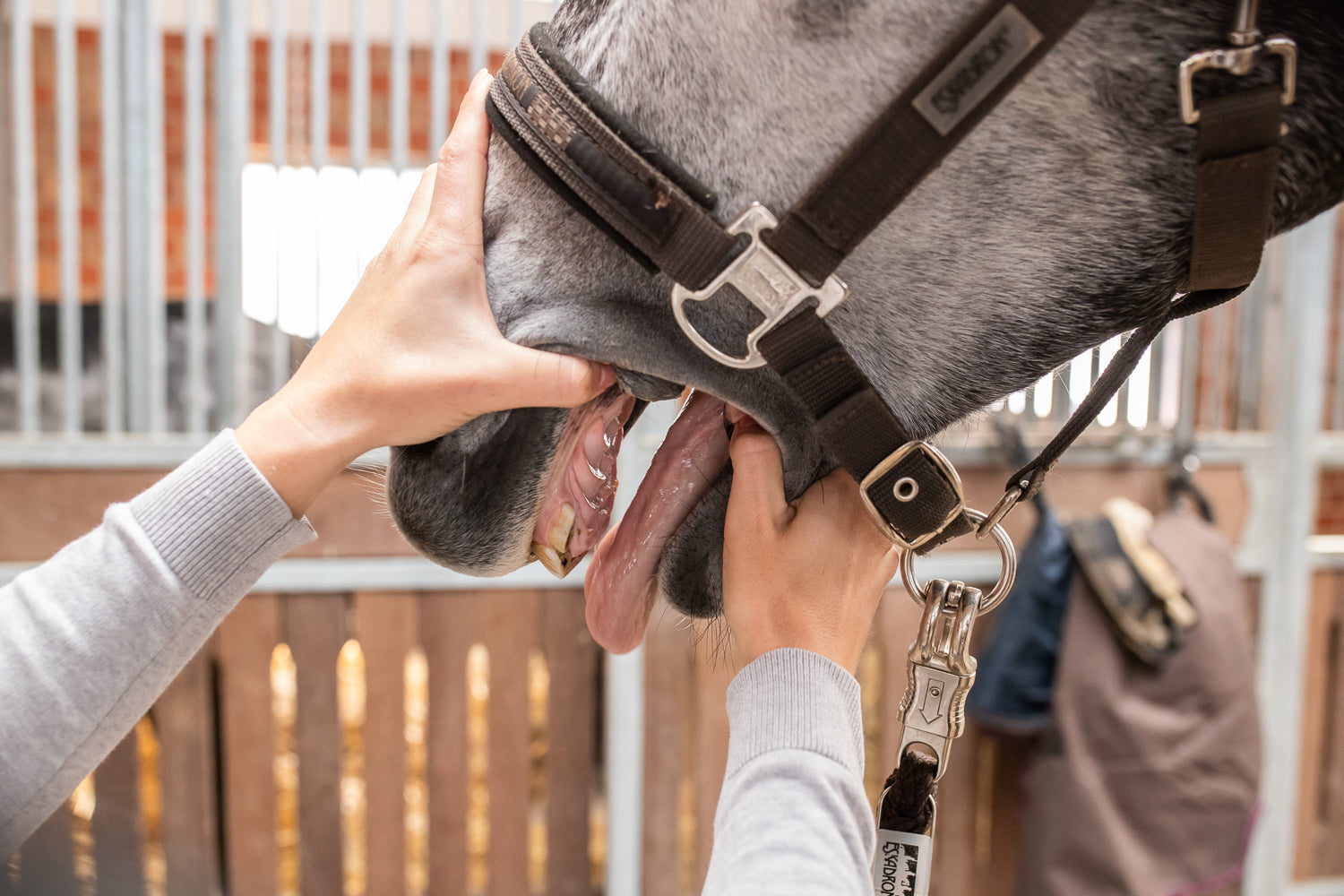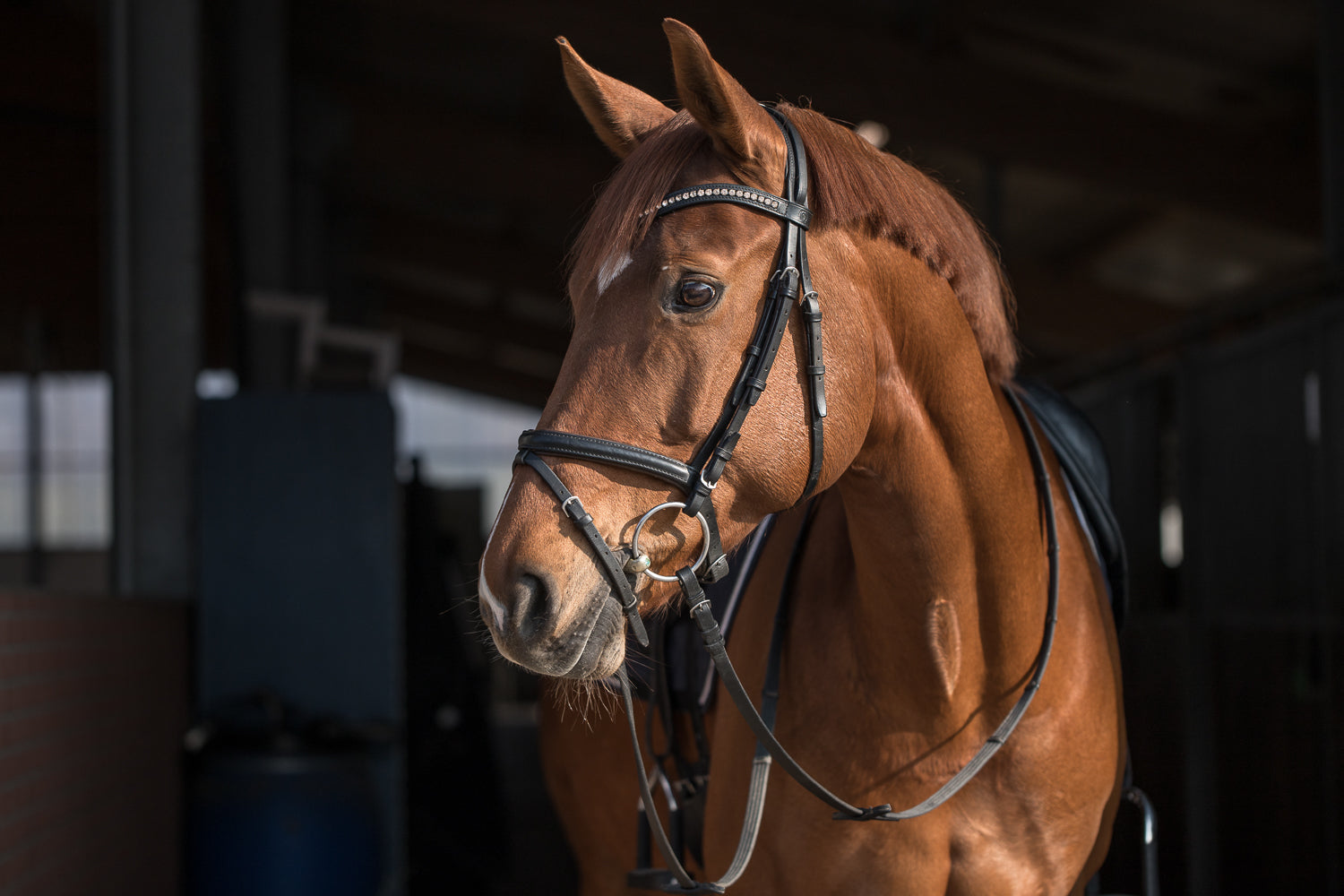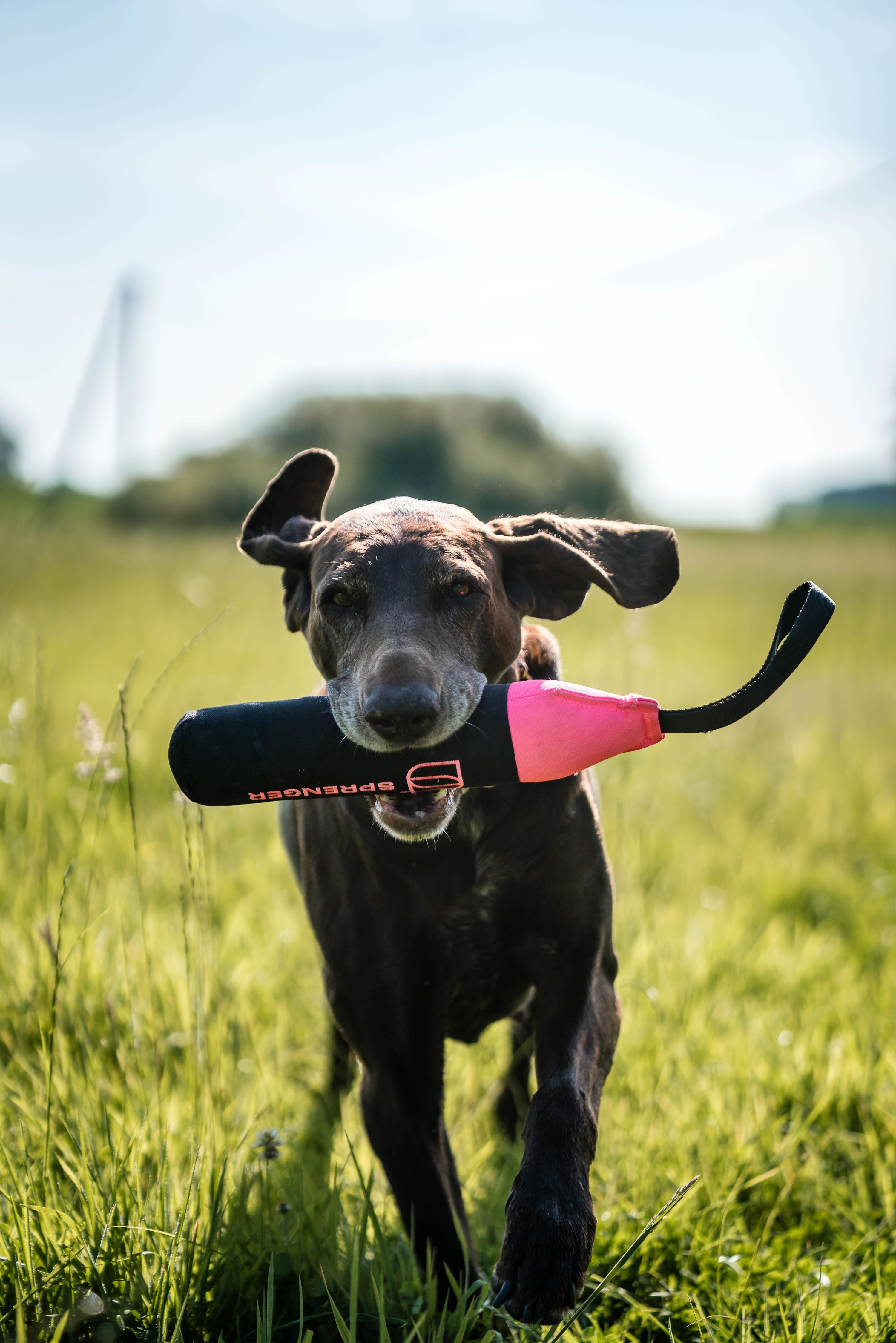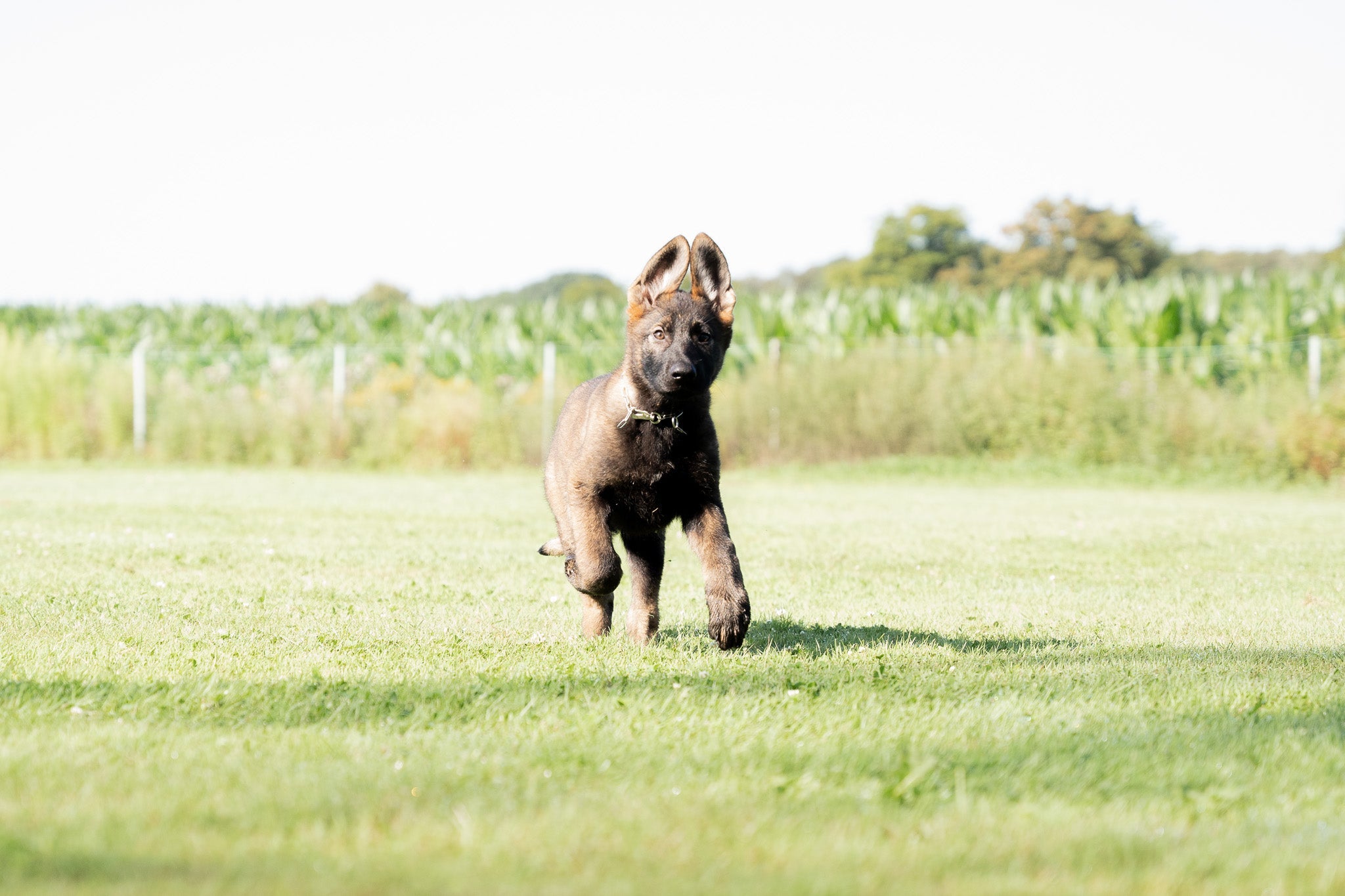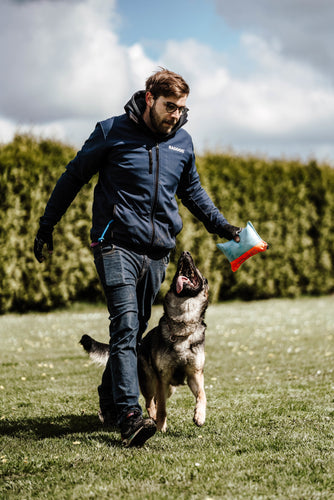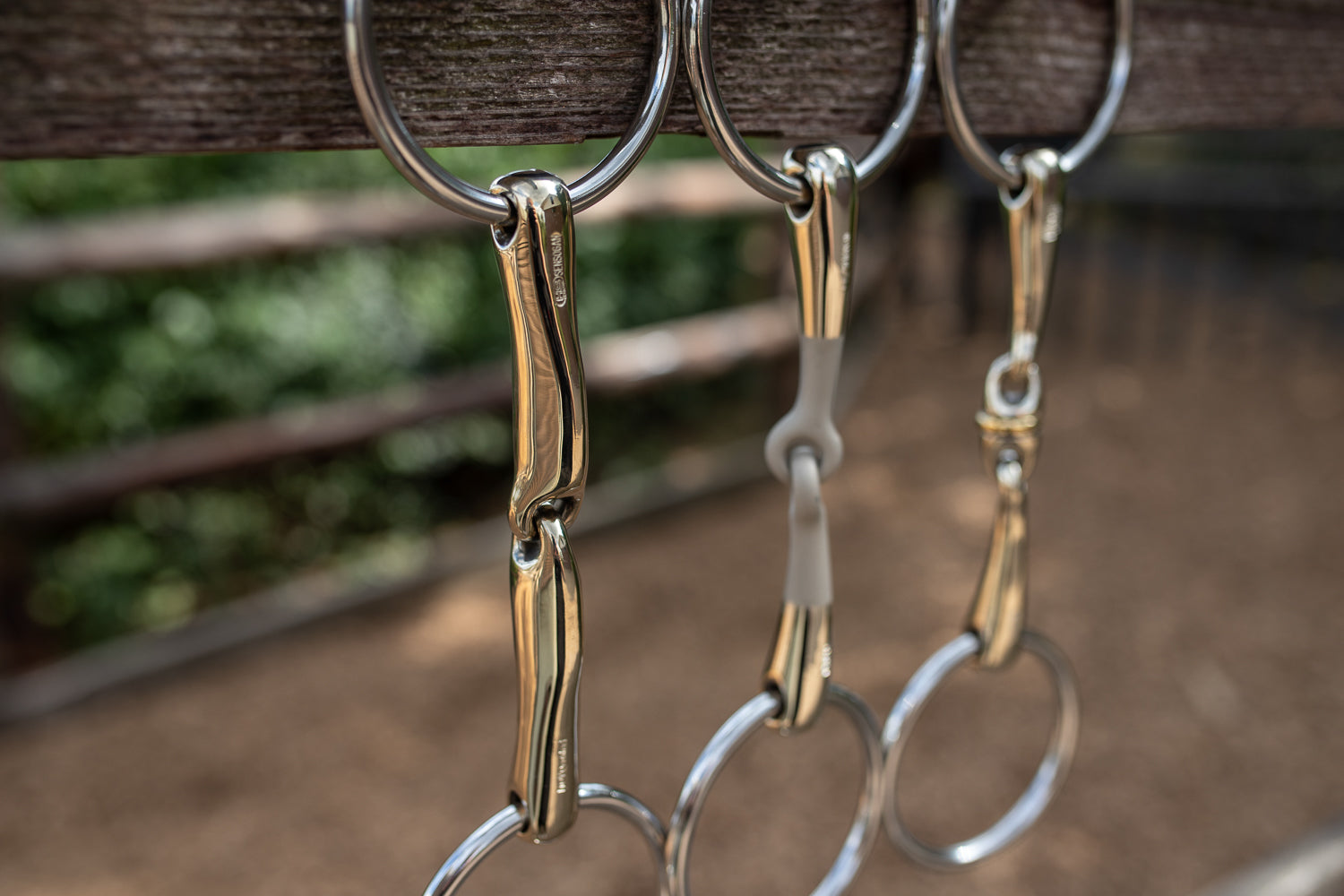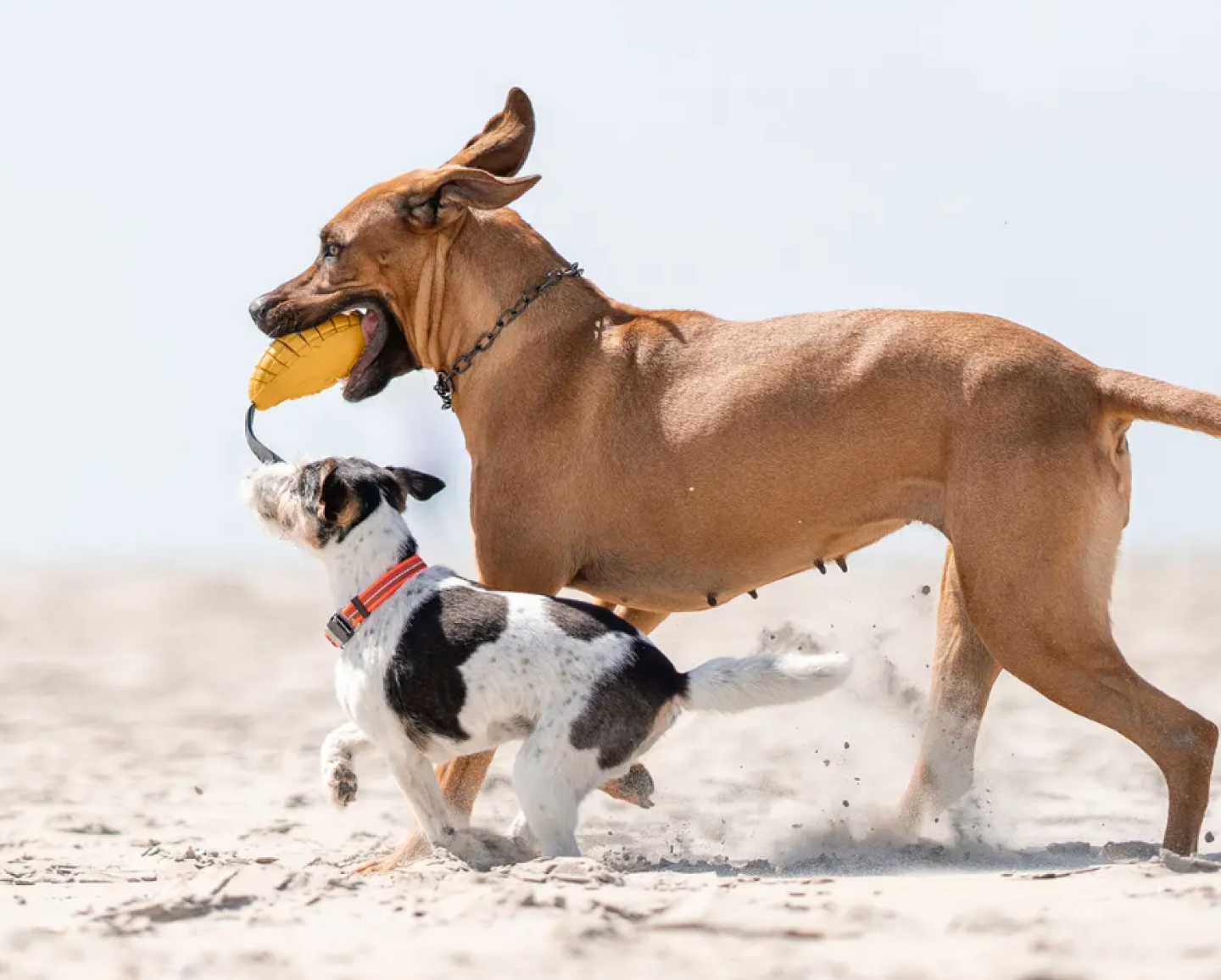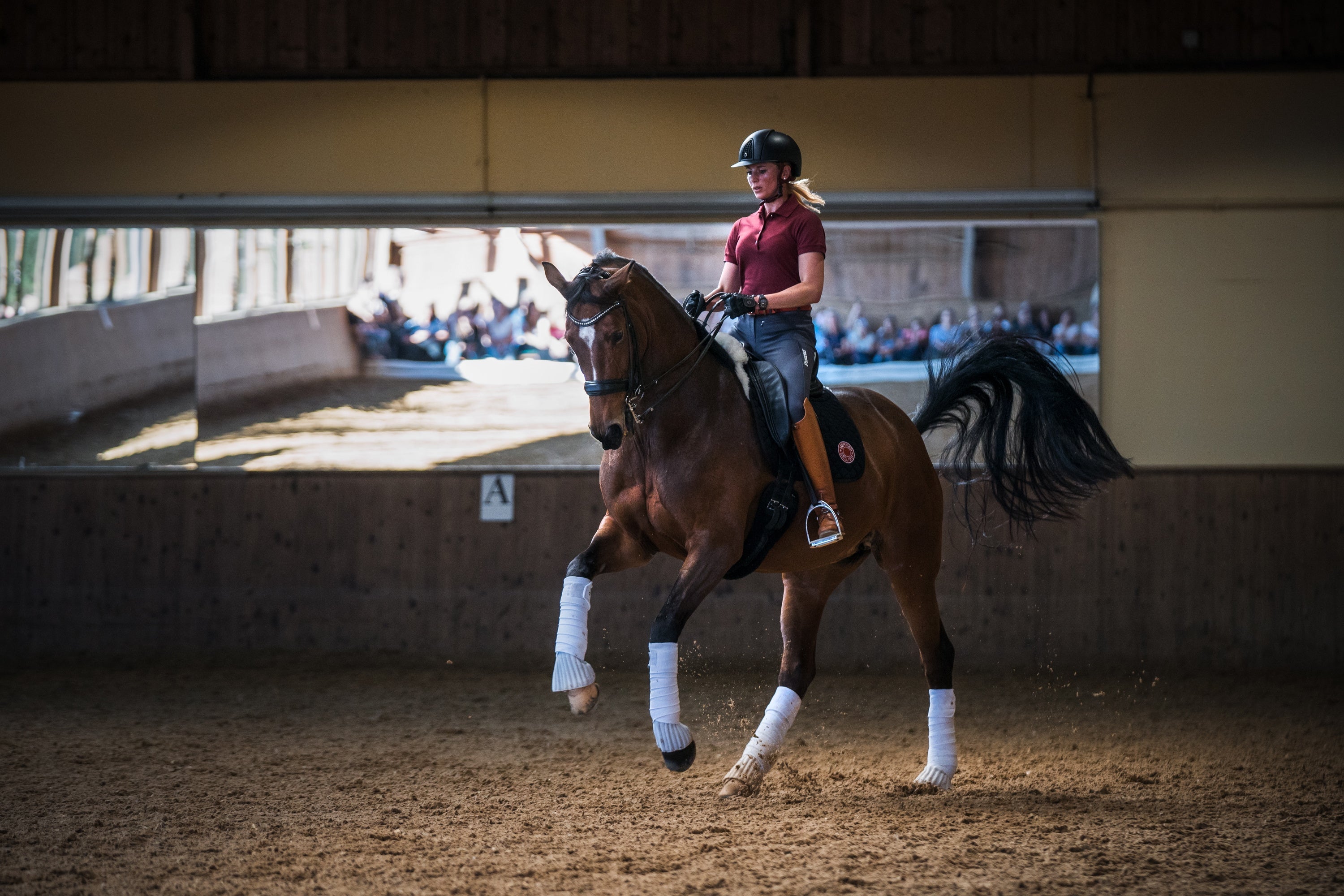
A “mouthy” horse that is unhappy with the bit can be a sign of discomfort or unease.
This behavior can manifest itself in various forms, such as extreme chewing, grinding, head tossing or a restless mouth.
In many cases, the cause of this behavior is an unsuitable bit that is not adapted to the specific anatomical needs of the horse.
In our blog article, we want to look at the causes of mouthiness and give recommendations for choosing the right bit.
The focus is on the particularly mouth-friendly KK ULTRA and Dynamic RS bits.

Causes
Before we take a look at possible solutions, it is important to first understand the cause of mouthy behavior. This often includes the following reasons:
An unsuitable bit: the wrong size or fit or simply an incorrectly fitted bit can cause your horse discomfort.
In the worst case, pressure points or injuries to the mouth can occur, causing significant pain. Are you unsure whether the bit fits your horse? Then read more here: 'Does my bit fit?
Dental problems: If your horse's teeth do not wear evenly, this can lead to sharp hooks on the teeth, which in turn can cause unpleasant injuries in the horse's mouth.
Your horse may also try to keep the bit away from painful or uncomfortable points, so that the aids do not reach the mouth correctly.
However, we would like to take this opportunity to point out once again that 'mouthy' behavior is not necessarily due to an unsuitable bit or dental problems, but that the horse should always be viewed holistically.
Discomfort caused by an unsuitable saddle or physical problems can also lead to a mouthy horse.
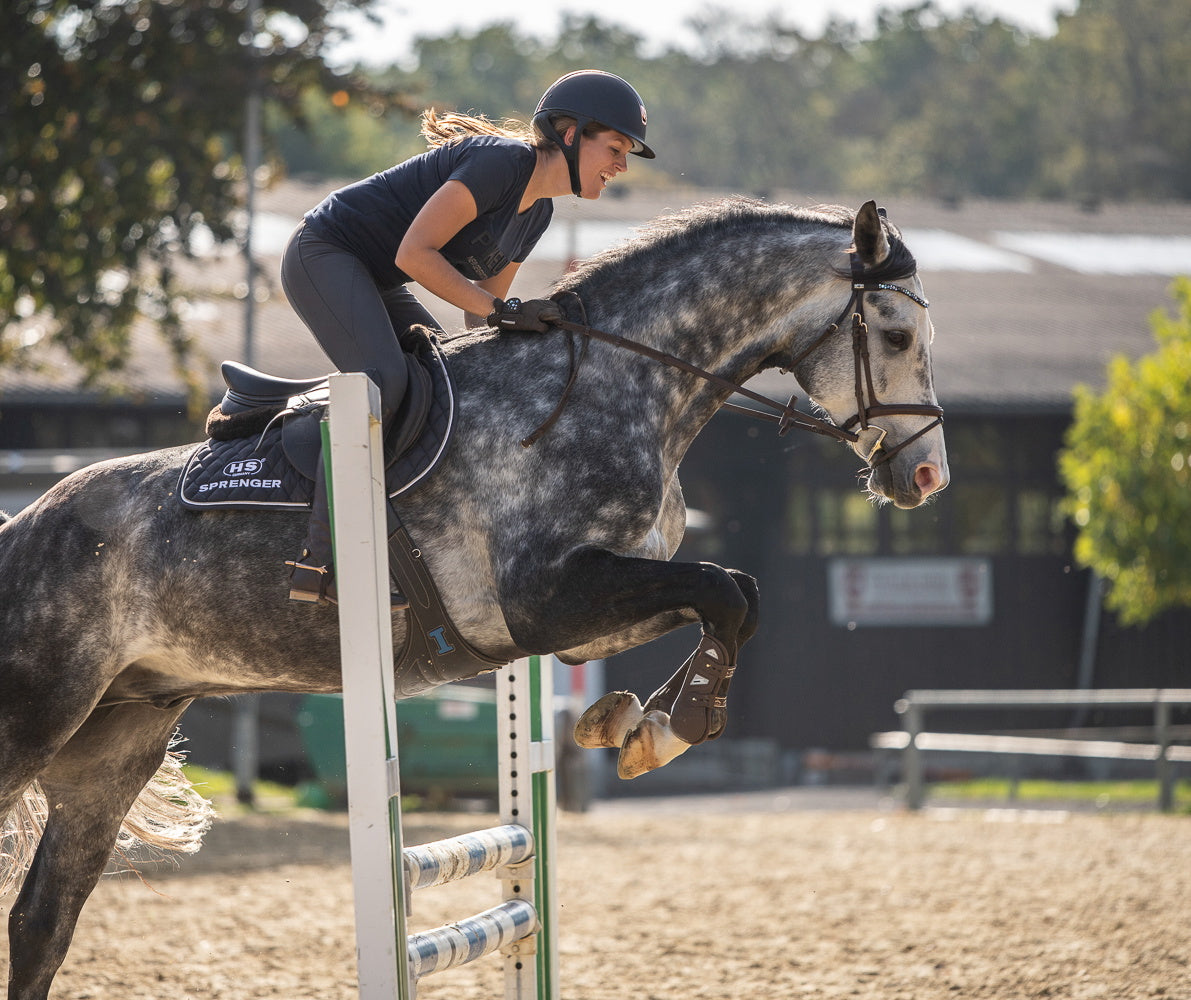
Bit recommendations for mouthy horses
1. dynamic RS bits for horses with a small mouth
The Dynamic RS bit from SPRENGER is an excellent choice for horses with a thick tongue and a small mouth.
These bits have a curved mouthpiece and are ergonomically designed to fit the horse's mouth perfectly.
The special shape distributes the pressure evenly on the tongue and bars, which ensures greater comfort, especially for horses with sensitive mouths.
The Dynamic RS bits are ideal for horses that show discomfort with conventional bits, as they distribute the pressure evenly thanks to the 45° forward inclined joints that prevent palatal pressure.
This makes the Dynamic RS bits particularly mouth-friendly and can provide relief for mouthy horses.
Another advantage is the material from which the bits are made: SENSOGAN is a copper alloy that specifically stimulates the horse's saliva flow and thus encourages chewing.
The chewing movement places the horse's focus on the bit and relaxes the jaw muscles - for a concentrated and relaxed partner.
Caution with fleshy corners of the mouth: However, this curved shape of the Dynamic RS bit can be problematic for horses with fleshy mouths.
In such cases, the bit can press the lips against the first molar and squeeze them, which in turn can lead to mouthiness.
We therefore recommend straighter bit shapes, such as our KK ULTRA bits, for horses with a lot of flews.
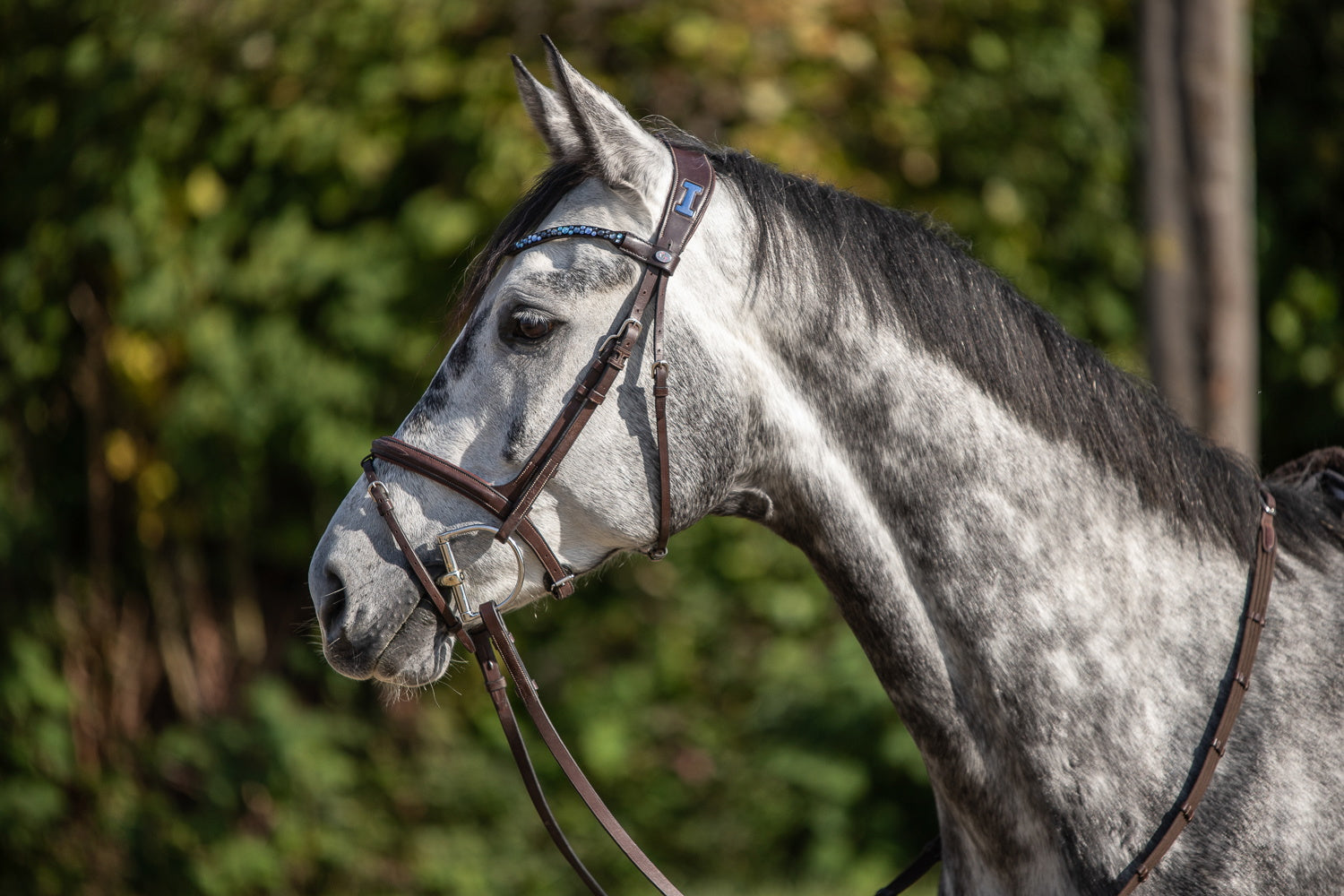
2. KK ULTRA bits for horses with fleshy corners of the mouth
Straight or less curved bits such as the KK ULTRA bits from SPRENGER are more suitable for horses with fleshy mouths where there is a risk of an anatomically shaped bit pinching the lips. The straighter shape offers significantly more space for fleshy mouth angles and prevents pinching between the bit ring and molar.
The KK ULTRA bit ensures a precise but gentle effect on the mouth and promotes a calm and relaxed contact.
Thanks to the innovative joint shape (centerpiece shortened and inclined forward by 45°), the bit is particularly mouth-friendly and well accepted. The aids can be given finely and precisely to the mouth.
Our KK ULTRA bits are also made from our well-established SENSOGAN, which has a positive effect on your four-legged partner's chewing activity.
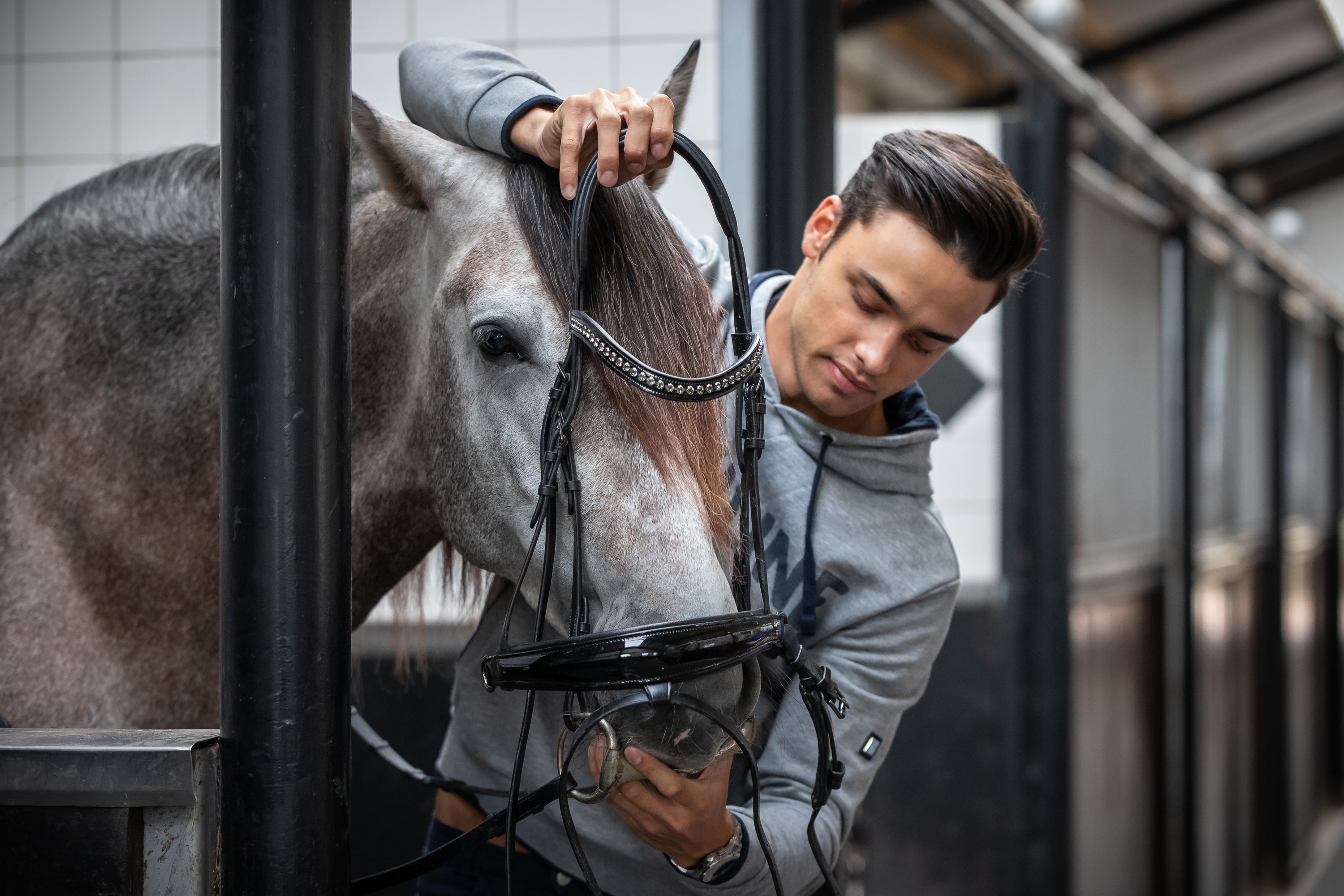
Further tips for avoiding mouthiness
In addition to choosing the right bits, there are other measures that can help to reduce mouthiness:
- Regular dental care:
Of course, even the most suitable bit cannot improve matters if sharp edges in the horse's mouth lead to injuries and sore spots.
Regular visits to the vet are an absolute must to ensure that no unwanted injuries are caused by the teeth.
A good vet can also help you choose the right bit by pointing out and explaining the anatomy of the horse's mouth:
Does your horse tend to have a thick or thin tongue? How much space is there between the upper and lower jaw and does the horse have a fleshy mouth?
You can use these aspects to find the perfect bit for your horse.
- Correct buckling of the bit:
The bit should be buckled in such a way that it lies relaxed in the mouth without having too much space left and right or being too tight.
Correct buckling ensures even pressure distribution and minimizes mouthiness.
If the bridle is buckled correctly, the cheek pieces of the bridle do not flapping when the reins are taken and the headpiece can be easily pushed over the ears when bridling.
The two folds that should form in the corner of the mouth are often used as a guide.
A look into your four-legged friend's mouth will also give you an idea of whether the bit is in the right place.
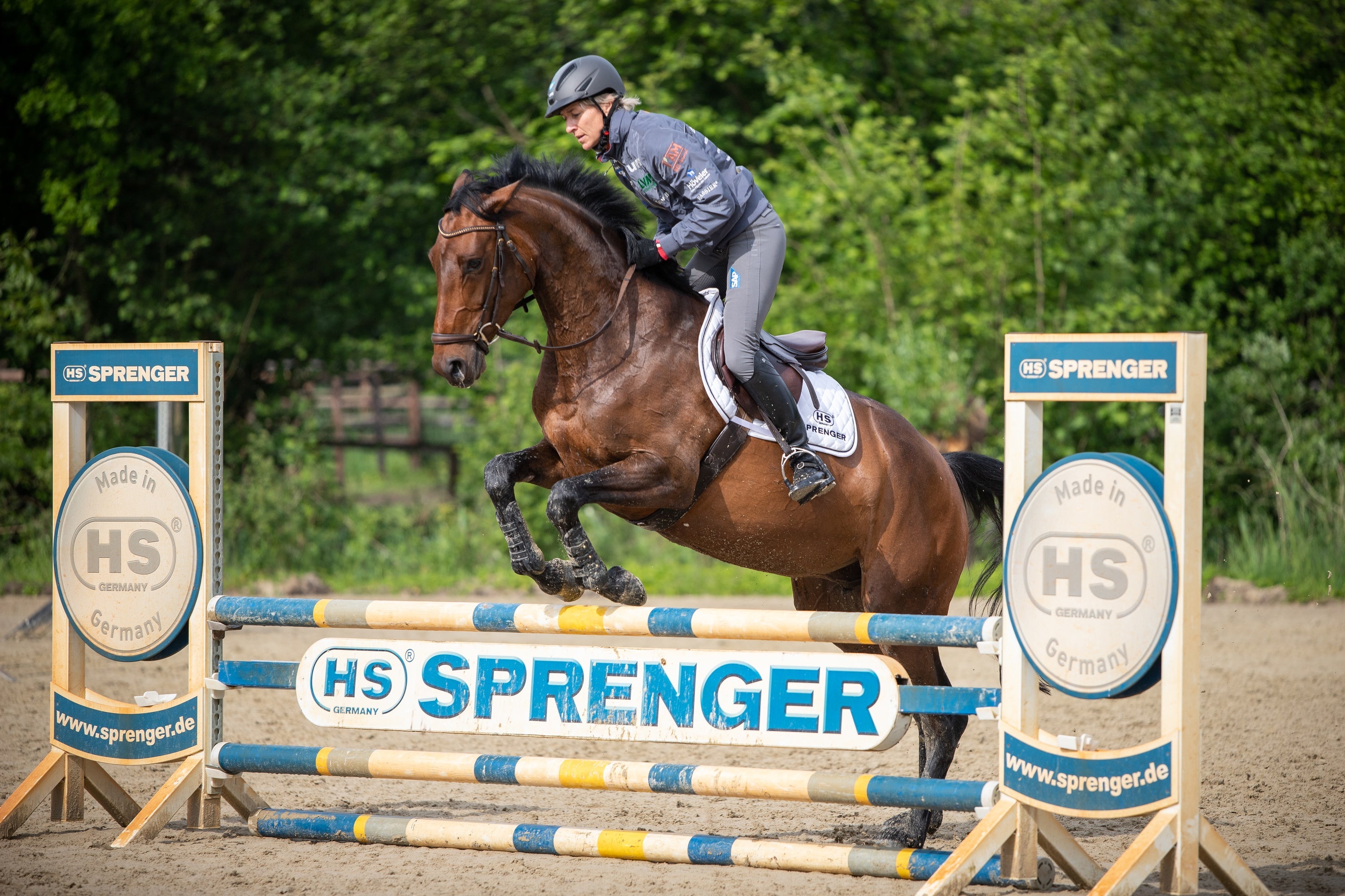
- Soft hand:
A soft, sensitive rider's hand is crucial to avoid mouthing.
Too harsh or unsteady rein contact can exacerbate the problem and make the constant contact uncomfortable for the horse.
A constant and sensitive connection that the horse can pull towards is the goal.
- Suitable bit material:
Our SENSOGAN not only promotes acceptance of the bit, but also leads to a more relaxed horse with a supple jaw musculature and topline by stimulating the chewing movement.
This is an absolute game changer, especially for horses that do not chew enough.

No more mouthy horses
Mouthiness in horses is often a sign that the bit or the way it is used is not optimally adapted to the horse.
Choosing the right bit plays a decisive role in correcting this behavior.
Many problems can be avoided by considering the individual anatomy of the horse's mouth and choosing a suitable bit.
It is important to check the bit regularly if it fits and for its condition, keeping the horse's anatomy in mind.
By combining the right equipment with a sensitive riding style, the horse's satisfaction and willingness to perform can be improved and mouthy behavior reduced in the long term.


